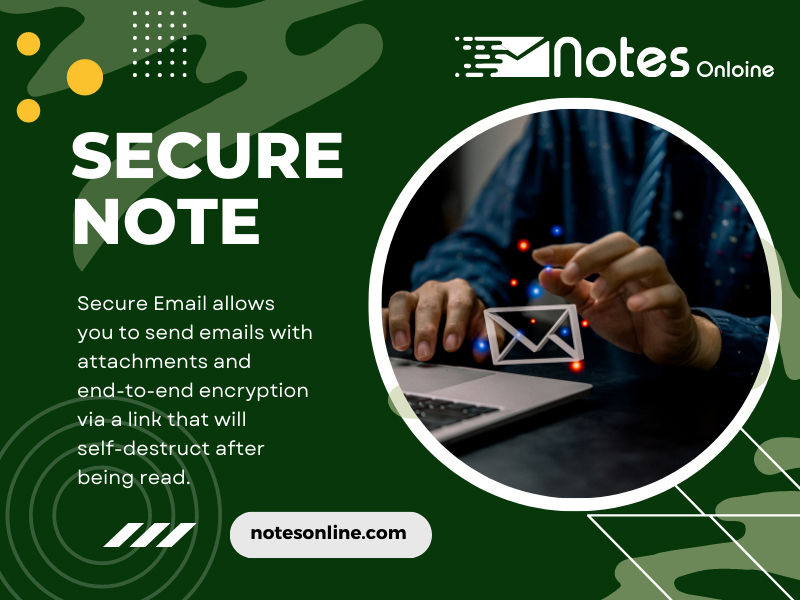Secure Note
- Notes Online

- Jul 27, 2023
- 3 min read
Updated: Aug 12, 2023
Keep Your Messages Safe: Learn How to Send Secure Notes with these FAQs
Don't let your confidential, secure note fall into the wrong hands. Embrace the future of secure communication with self-destructing messages.
With the help of our user-friendly FAQ guide, you can understand the ins and outs of this innovative technology. This knowledge will empower you to send notes with confidence, knowing that they will disappear after being read.
Take charge of your privacy today and explore the realm of self-destructing messages for a safer, worry-free messaging experience.
What are Self-Destructing Messages?
Self-destructing messages, also known as ephemeral messages, are secure message designed to disappear after the recipient has read them automatically.
These messages come with a predefined time limit, ensuring that the content is accessible for a specific period, after which it is permanently deleted from both the sender's and receiver's devices.
How Can I Send a Self-Destructing Message?
To send a self-destructing message, you can utilize various platforms or apps that offer this feature. The process usually involves composing your message, generating a unique link, and sharing it with the intended recipient.
Can I Send Self-Destructing Messages to Multiple Recipients?
You can send the same self-destructing message to multiple recipients on certain platforms. Choosing a specific time interval for the message's removal will automatically delete it from the server after that set time, no matter how many times it has been viewed.

What If I Send the Message to the Wrong Person or Regret Sending It?
In case you send the self-destructing message to the wrong person or regret sending it, you can access the link you shared, and the message will self-destruct upon being displayed. If the recipient tries to access the link again, they will be notified that the message has already been read.
Can I Receive Notifications When the Message is Read?
Certain online notes platform offers the option to receive notifications when the self-destructing message is read.
By enabling notifications and providing your email address, you will receive an email alert once the recipient accesses the message. Additionally, you can add a reference to identify each message for your convenience.
Do Self-Destructing Messages Truly "Self-Destruct"?
While self-destructing messages disappear from the server after being read, it's essential to recognize that recipients can copy and paste the message content. The primary purpose of these messages is to ensure that no one ever reads the contents before reaching the intended recipient, and are automatically deleted after being accessed.
Can Recipients Retrieve Self-Destructing Messages From Browsing History or Recently Closed Tabs?
No, self-destructing messages cannot be retrieved from browsing history, using the back button, or accessing recently closed tabs. Once the message is read and the link is accessed, the content is permanently removed, leaving no trace.
How Long are Unread Messages Stored on the server?
For added security, platforms often automatically delete self-destructing messages that remain unread after a certain period. It ensures that undelivered messages are not stored indefinitely, reducing the risk of unauthorized access.
In conclusion:
Self-destructing messages offer a practical and convenient way to secure your communications and protect sensitive information.
By choosing platforms that prioritize privacy and security, you can enhance the confidentiality of your messages, even in digital environments.
One platform that exemplifies these features is Notes Online, providing a reliable and secure environment for sending self-destructing notes. With Notes Online, you can rest assured that your confidential messages will remain protected, and your privacy will be preserved throughout the communication.
So, take a step towards secure messaging and experience the peace of mind that self-destructing messages can offer!



Comments